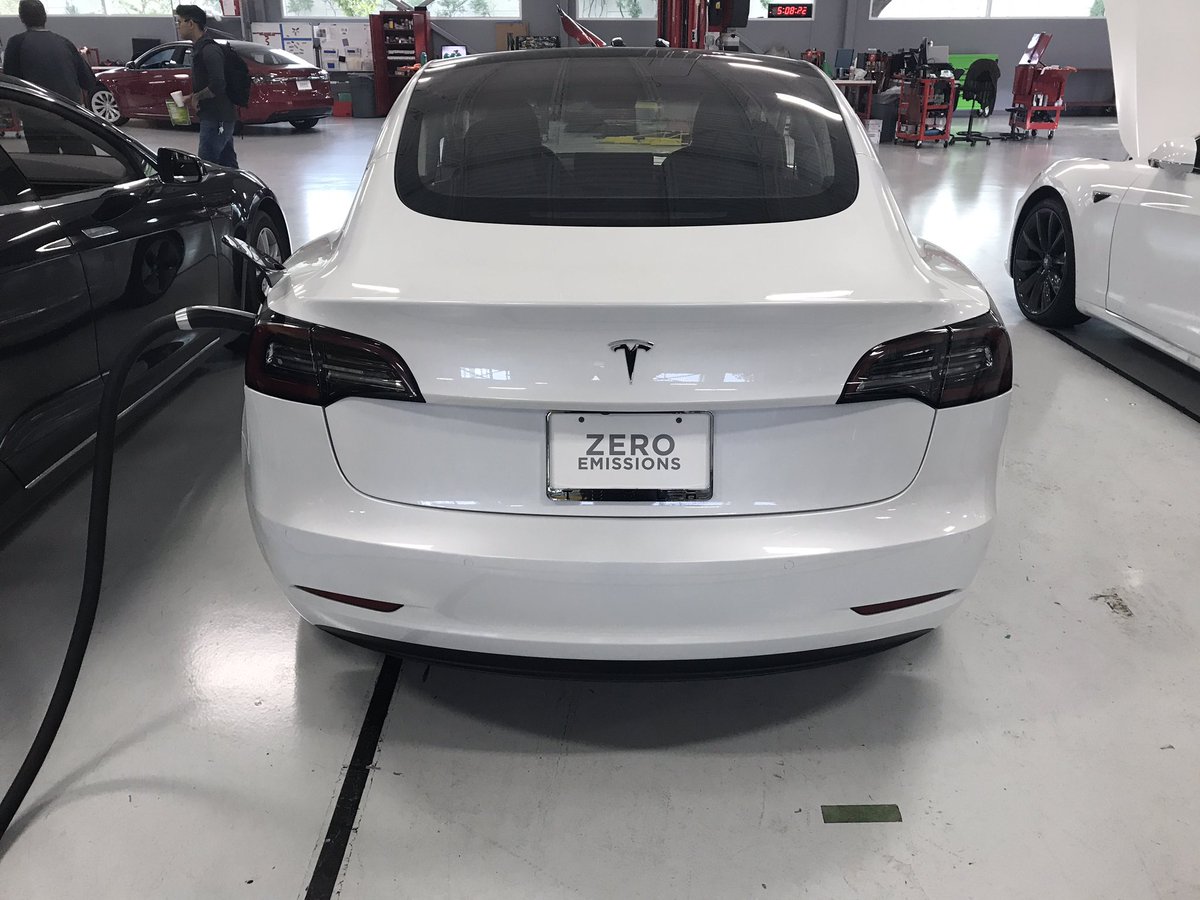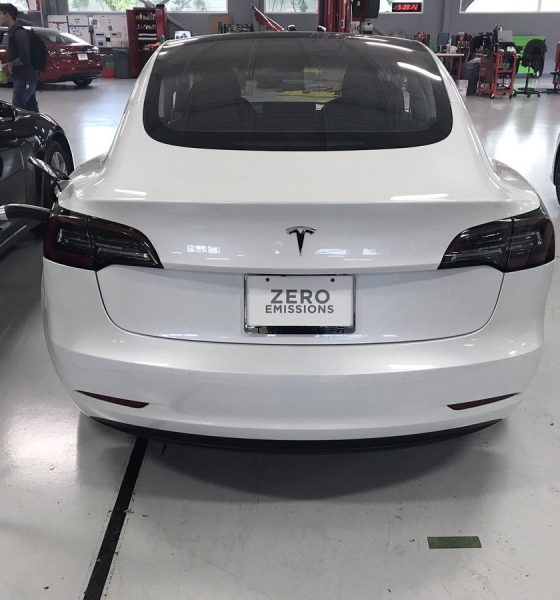

News
Republican party in Texas backs Tesla sales plan
Opposition to direct sales to consumers may be weakening in Texas. The state Republican Party has include a plank in its political platform backing Tesla’s bid. 90% of Republican representatives say they are in favor of the change.
Texas is a red state through and through. The Republican Party is strong there, but it is also a place where people have a strong libertarian streak. Many oppose to what is often considered meddling in private affairs by government. Last week , state GOP convention delegates in Texas endorsed the idea of allowing Tesla to sell its cars directly to customers, despite bitter opposition. Nearly 90% of the more than 8,000 delegates supported language in the party platform that backs Tesla.
The platform committee rejected pleas by U.S. Rep. Roger Williams and former Republican national committeeman Bill Crocker to strip the pro-Tesla language from the platform. Williams is a car dealer, and Crocker is a lawyer who represents car dealers. Williams personally called all five members of the platform subcommittee on the economy according to its chairman, Alan Arvello. When asked about the calls by the Dallas Morning News, a spokesperson for Williams said, “Like all Members of Congress, Rep. Williams uses his spare time to help support his political party.” Uh huh.
The position taken by the Texas automobile dealers has been successful so far at preventing a change in state law to allow Tesla to sell cars directly to customers. As things stand at the moment, customers can look at a Tesla car in one of the company’s three “galleries” in Dallas, Houston and Austin, but can’t test drive them without an appointment.
They also can’t buy the cars onsite. A Tesla employee can discuss the technology but cannot discuss price, take orders or direct the customer to the company’s website. Test drives are only permitted on Thursday, Friday, or Saturday. Even then, the company must get a test permit first.
The only way to buy a Tesla in Texas is to order online. The car will arrive registered in California, which means the customer has to re-register it in Texas. To have a Tesla worked on at one of the company’s four maintenance centers in Texas, service calls must be routed through the company’s California offices. Tesla says Texas is one of only five states with such a burdensome process.
But things are changing. Younger shoppers are less impressed with the state’s heavy handed approach to Tesla. They see little difference between a Tesla and an Apple product. Their libertarian leanings are offended by how the state has dealt with Tesla these past 3 years.
David White, Tesla’s Texas spokesman, said he and two others working in the company’s booth at the Dallas convention spoke to thousands of delegates last week. Many were surprised to learn of barriers the Legislature has imposed that limit “open competition” in car sales, he said. “If Texas is truly ‘wide open’ for business, our elected officials should take the appropriate steps to end these frivolous regulations in 2017,” White said.
Arvello, chairman of the platform subcommittee and a physician assistant, said the pressure from Williams and Crocker seemed to backfire. “The more we were getting calls and having people try to influence us to vote against it, just some of that Texas emotion took over from my committee,” he said. “It was like, we’re going to do this!”
2017 may be the year when Tesla is finally victorious in its battle to sell directly to customers in Texas.
Source and photo credit: Dallas Morning News

News
Tesla starts showing how FSD will change lives in Europe
Local officials tested the system on narrow country roads and were impressed by FSD’s smooth, human-like driving, with some calling the service a game-changer for everyday life in areas that are far from urban centers.

Tesla has launched Europe’s first public shuttle service using Full Self-Driving (Supervised) in the rural Eifelkreis Bitburg-Prüm region of Germany, demonstrating how the technology can restore independence and mobility for people who struggle with limited transport options.
Local officials tested the system on narrow country roads and were impressed by FSD’s smooth, human-like driving, with some calling the service a game-changer for everyday life in areas that are far from urban centers.
Officials see real impact on rural residents
Arzfeld Mayor Johannes Kuhl and District Administrator Andreas Kruppert personally tested the Tesla shuttle service. This allowed them to see just how well FSD navigated winding lanes and rural roads confidently. Kruppert said, “Autonomous driving sounds like science fiction to many, but we simply see here that it works totally well in rural regions too.” Kuhl, for his part, also noted that FSD “feels like a very experienced driver.”
The pilot complements the area’s “Citizen Bus” program, which provides on-demand rides for elderly residents who can no longer drive themselves. Tesla Europe shared a video of a demonstration of the service, highlighting how FSD gives people their freedom back, even in places where public transport is not as prevalent.
What the Ministry for Economic Affairs and Transport says
Rhineland-Palatinate’s Minister Daniela Schmitt supported the project, praising the collaboration that made this “first of its kind in Europe” possible. As per the ministry, the rural rollout for the service shows FSD’s potential beyond major cities, and it delivers tangible benefits like grocery runs, doctor visits, and social connections for isolated residents.
“Reliable and flexible mobility is especially vital in rural areas. With the launch of a shuttle service using self-driving vehicles (FSD supervised) by Tesla in the Eifelkreis Bitburg-Prüm, an innovative pilot project is now getting underway that complements local community bus services. It is the first project of its kind in Europe.
“The result is a real gain for rural mobility: greater accessibility, more flexibility and tangible benefits for everyday life. A strong signal for innovation, cooperation and future-oriented mobility beyond urban centers,” the ministry wrote in a LinkedIn post.
News
Tesla China quietly posts Robotaxi-related job listing
Tesla China is currently seeking a Low Voltage Electrical Engineer to work on circuit board design for the company’s autonomous vehicles.

Tesla has posted a new job listing in Shanghai explicitly tied to its Robotaxi program, fueling speculation that the company is preparing to launch its dedicated autonomous ride-hailing service in China.
As noted in the listing, Tesla China is currently seeking a Low Voltage Electrical Engineer to work on circuit board design for the company’s autonomous vehicles.
Robotaxi-specific role
The listing, which was shared on social media platform X by industry watcher @tslaming, suggested that Tesla China is looking to fill the role urgently. The job listing itself specifically mentions that the person hired for the role will be working on the Low Voltage Hardware team, which would design the circuit boards that would serve as the nervous system of the Robotaxi.
Key tasks for the role, as indicated in the job listing, include collaboration with PCB layout, firmware, mechanical, program management, and validation teams, among other responsibilities. The role is based in Shanghai.
China Robotaxi launch
China represents a massive potential market for robotaxis, with its dense urban centers and supportive policies in select cities. Tesla has limited permission to roll out FSD in the country, though despite this, its vehicles have been hailed as among the best in the market when it comes to autonomous features. So far, at least, it appears that China supports Tesla’s FSD and Robotaxi rollout.
This was hinted at in November, when Tesla brought the Cybercab to the 8th China International Import Expo (CIIE) in Shanghai, marking the first time that the autonomous two-seater was brought to the Asia-Pacific region. The vehicle, despite not having a release date in China, received a significant amount of interest among the event’s attendees.
Elon Musk
Elon Musk and Tesla AI Director share insights after empty driver seat Robotaxi rides
The executives’ unoccupied tests hint at the rapid progress of Tesla’s unsupervised Robotaxi efforts.

Tesla CEO Elon Musk and AI Director Ashok Elluswamy celebrated Christmas Eve by sharing personal experiences with Robotaxi vehicles that had no safety monitor or occupant in the driver’s seat. Musk described the system’s “perfect driving” around Austin, while Elluswamy posted video from the back seat, calling it “an amazing experience.”
The executives’ unoccupied tests hint at the rapid progress of Tesla’s unsupervised Robotaxi efforts.
Elon and Ashok’s firsthand Robotaxi insights
Prior to Musk and the Tesla AI Director’s posts, sightings of unmanned Teslas navigating public roads were widely shared on social media. One such vehicle was spotted in Austin, Texas, which Elon Musk acknowleged by stating that “Testing is underway with no occupants in the car.”
Based on his Christmas Eve post, Musk seemed to have tested an unmanned Tesla himself. “A Tesla with no safety monitor in the car and me sitting in the passenger seat took me all around Austin on Sunday with perfect driving,” Musk wrote in his post.
Elluswamy responded with a 2-minute video showing himself in the rear of an unmanned Tesla. The video featured the vehicle’s empty front seats, as well as its smooth handling through real-world traffic. He captioned his video with the words, “It’s an amazing experience!”
Towards Unsupervised operations
During an xAI Hackathon earlier this month, Elon Musk mentioned that Tesla owed be removing Safety Monitors from its Robotaxis in Austin in just three weeks. “Unsupervised is pretty much solved at this point. So there will be Tesla Robotaxis operating in Austin with no one in them. Not even anyone in the passenger seat in about three weeks,” he said. Musk echoed similar estimates at the 2025 Annual Shareholder Meeting and the Q3 2025 earnings call.
Considering the insights that were posted Musk and Elluswamy, it does appear that Tesla is working hard towards operating its Robotaxis with no safety monitors. This is quite impressive considering that the service was launched just earlier this year.









